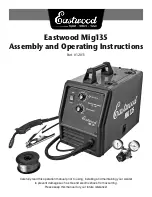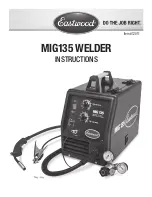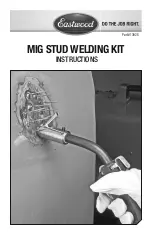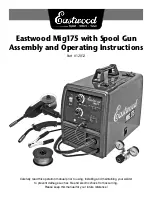
1 SAFETY
0463 340 030
- 7 -
© ESAB AB 2018
WARNING!
EQUIPMENT MAINTENANCE
Faulty or improperly maintained equipment can cause injury or death.
Therefore:
1.
Always have qualified personnel perform the installation,
troubleshooting and maintenance work. Do not perform any electrical
work unless you are qualified to perform such work.
2.
Before performing any maintenance work inside a power source,
disconnect the power source from the incoming electrical power.
3.
Maintain cables, earthing wire, connections, power cord and power
supply in safe working order. Do not operate any equipment in faulty
condition.
4.
Do not abuse any equipment or accessories. Keep equipment away
from heat sources such as furnaces, wet conditions such as water
puddles, oil or grease, corrosive atmospheres and inclement weather.
5.
Keep all safety devices and cabinet covers in position and in good
repair.
6.
Use equipment only for its intended purpose. Do not modify it in any
manner.
CAUTION!
ADDITIONAL SAFETY INFORMATION
For more information on safe practices for electric arc welding and cutting
equipment, ask your supplier for a copy of “Precautions and Safe Practices
for Arc Welding, Cutting and Gouging”, Form 52-529.
The following publications are recommended to you:
1.
ANSI/ASC Z49.1 - “Safety in Welding and Cutting”
2.
AWS C5.5 - “Recommended Practices for Gas Tungsten Arc Welding”
3.
AWS C5.6 - “Recommended Practices for Gas Metal Arc welding”
4.
AWS SP - “Safe practices” - Reprint, Welding Handbook
5.
ANSI/AWS F4.1 - “Recommended Safe Practices for Welding and
Cutting of Containers That Have Held Hazardous Substances”
6.
OSHA 29 CFR 1910 - "Safety and health standards"
7.
CSA W117.2 - "Code for safety in welding and cutting"
8.
NFPA Standard 51B, “Fire Prevention During Welding, Cutting, and
Other Hot Work"
9.
CGA Standard P-1, “Precautions for Safe Handling of Compressed
Gases in Cylinders”
1
0.
ANSI Z87.1, "Occupational and Educational Personal Eye and Face
Protection Devices"
1.3
User responsibility
Users of ESAB equipment have the ultimate responsibility for ensuring that anyone who
works on or near the equipment observes all the relevant safety precautions. Safety
precautions must meet the requirements that apply to this type of equipment. The following
recommendations should be observed in addition to the standard regulations that apply to
the workplace.
All work must be carried out by trained personnel well-acquainted with the operation of the
equipment. Incorrect operation of the equipment may lead to hazardous situations which can
result in injury to the operator and damage to the equipment.








































